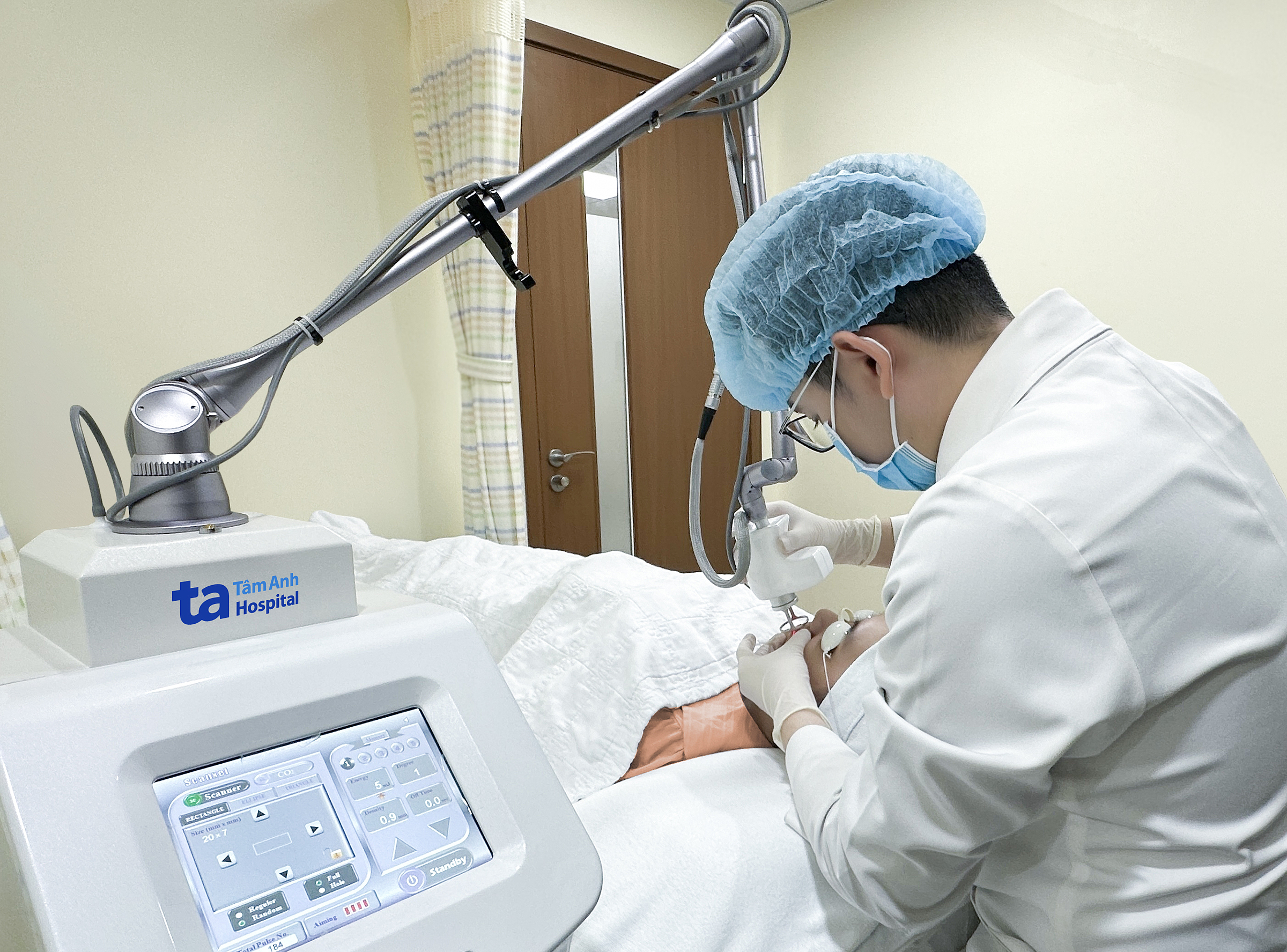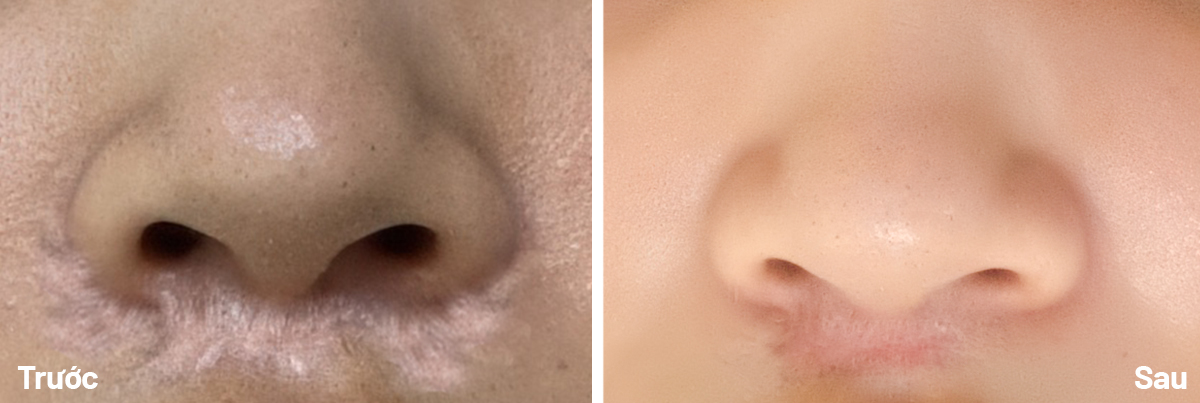Dr. Vu Thi Thuy Trang, a dermatologist at Tam Anh General Hospital in Ho Chi Minh City, explained that Van's scar showed signs of fibrous tissue growth but remained within the original wound boundaries (hypertrophic scar). The philtrum, a delicate area rich in blood vessels and constantly moving during speech and eating, is prone to tension, stimulating fiber tissue production and increasing the risk of raised or hypertrophic scars. Its central location on the face means frequent sun exposure, making it susceptible to pigmentation and slow healing if not properly cared for.
Scars on the philtrum are often difficult to treat and take longer to heal than those on other body parts like the arms, back, or thighs. The area's sensitivity and numerous capillaries make it vulnerable to infection from unsanitary topical applications like leaves or raw vegetables, which contributed to Van's scarring, according to Dr. Trang.
 |
Van's scar has become smoother and less noticeable after two CO2 laser treatments. Photo: Tam Anh General Hospital |
Van's scar has become smoother and less noticeable after two CO2 laser treatments. Photo: Tam Anh General Hospital
Dr. Trang prescribed 6-10 fractional CO2 laser treatments, spaced one month apart. The first two sessions used low energy to soften the scar tissue and reduce collagen overproduction without being too invasive, minimizing recovery time. From the third session onwards, the energy level was gradually increased within safe limits to avoid post-inflammatory hyperpigmentation or delayed healing, common issues in the philtrum area.
 |
A doctor uses a CO2 laser to treat Van's scar. Photo: Tam Anh General Hospital |
A doctor uses a CO2 laser to treat Van's scar. Photo: Tam Anh General Hospital
Mild redness, swelling, and peeling are normal during the initial days after laser treatment as the skin repairs itself. Van was advised to apply cold compresses, cleanse the area with saline solution, keep the treated skin clean, and use sun protection diligently. She was also told to avoid rubbing, scratching, and using products containing alcohol, acid, or retinoids. After three months, the scar showed significant improvement: softer, flatter, less pigmented, closer in color to the surrounding skin, and no longer itchy or tight.
Keloid scars, raised, hard, often itchy, and aesthetically undesirable, result from uncontrolled collagen overproduction after skin injury. Proper wound care after an accident is crucial to prevent keloid formation.
According to Dr. Trang, applying leaves or traditional remedies can cause infection and prolonged inflammation, increasing the risk of scarring. To prevent scars, wounds should be cleaned with antiseptic solution, kept dry, and treated professionally at a medical facility. Once healed, scar-reducing products can be used under professional guidance; self-treatment should be avoided. Keloid scar treatment requires patience and adherence to medical advice for optimal results.
Minh Huong
*The patient's name has been changed.
| Readers can submit questions about dermatology and cosmetic dermatology here for answers from doctors. |












